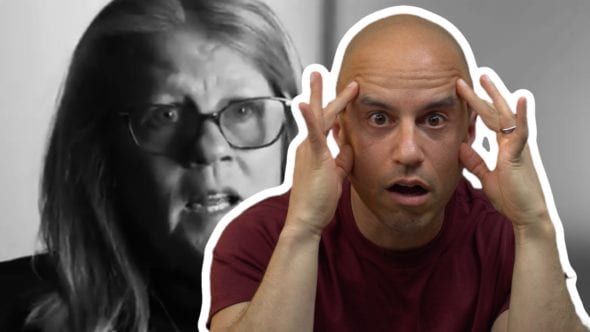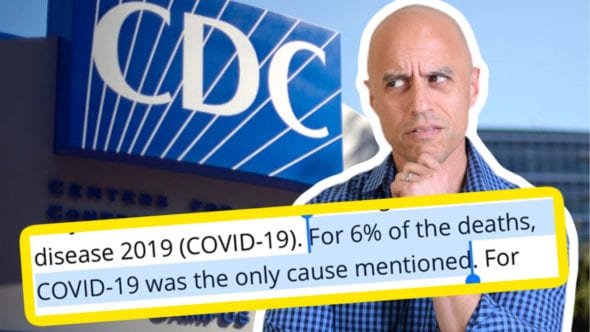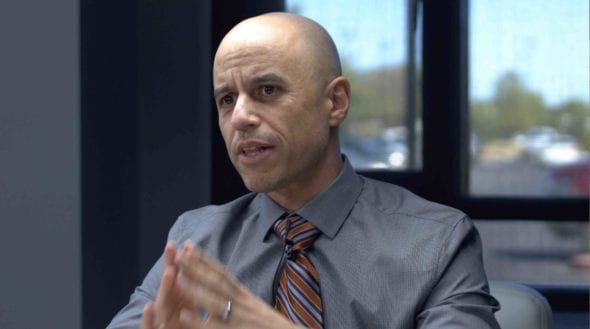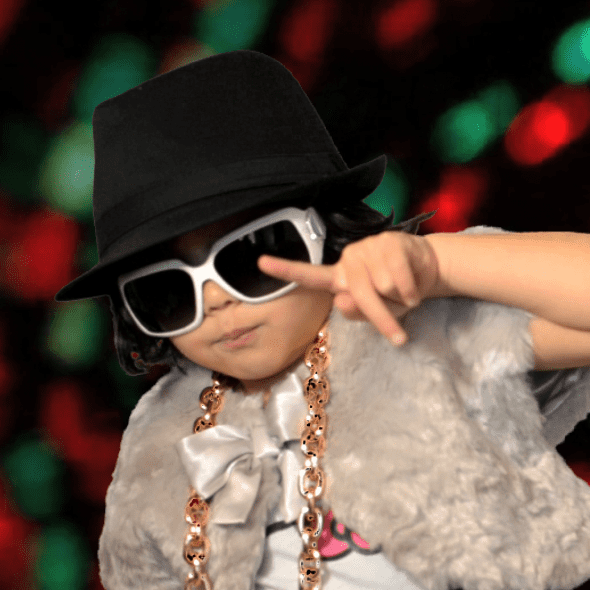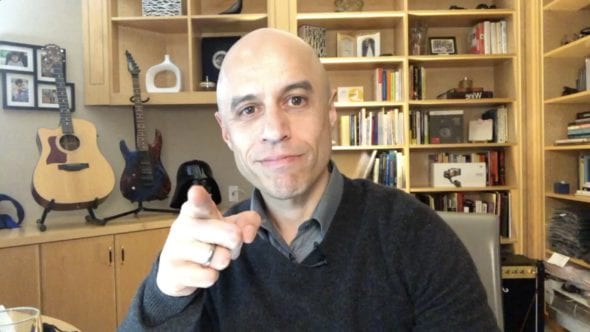Y’all got any more of that CBD oil??
Marijuana derivatives such as cannabidiol (CBD) have been claimed to cure everything from human gout to anxiety in dogs. As a medical practitioner or as a patient, how do you cut through the haze of reefer madness online? This shareable video is designed to help you do just that. (This one by Doc Vader? Not so much.)
THC vs. CBD
THC, or tetrahydrocannabinol, is the psychoactive component of the marijuana plant associated with many of the “desirable” mental effects of recreational cannabis use. The “high” in other words.
But there are lots of “cannabinoids” in marijuana that have different effects, such as CBD. It isn’t psychoactive in the sense that THC is, and so it doesn’t cause the “stoned” effect. But many in the online arena and beyond ascribe beneficial disease-fighting effects to CBD (and to THC, and yet other elements of this complex plant).
What does the evidence say?
Just because CBD is natural doesn’t mean it’s safe or effective. You have to study it and look at the evidence. Unfortunately, high quality trials are unusually for multiple reasons (one of which is that marijuana is still classified as a Schedule I drug by the FDA…meaning there is no known medical use—this makes it hard to study historically). Still:
- There is evidence that it may reduce seizures in a pair of particular types of rare childhood seizure disorders. There is actually a recent cannabis-based pharmacology therapy approved by FDA for this purpose.
- Claims of anti-inflammatory effects, social anxiety and general anxiety amelioration are based on small animal studies and small case studies in human, and on anecdote.
- What about curing cancer? No reliable evidence beyond anecdotes that likely confuse correlation with causation.
CBD Supplements
Like much of the Supplement Industrial Complex, there is no good regulation for CBD supplements. These can contain differing amounts of the actual active substance. This means you have NO IDEA how much of the actual drug you’re taking.
Why is this important? Well, turns out, CBD actually interferes with the metabolism of other drugs.
1 in 5 of CBD supplements tested contained psychoactive THC.
In trials involving CBD, up to 10% of patients had elevation of their liver enzymes and 2-3% had to STOP the drug due to these elevations. Like any pharmacologic agent, natural or otherwise, CBD has adverse side effects.
What about medical marijuana?
Evidence-based guru and Canadian ZDoggMD homie James McCormack (and his co-authors) wrote a recent paper recommending guidelines for how clinicians should use medical marijuana. They reviewed the best quality literature that exists and looked at 3 conditions for which marijuana was better than placebo. For everything else, the evidence just wasn’t good enough. They do not recommend marijuana as the first-line therapy and do recommend using it as an adjunct to other medications. They actually recommend a medically synthetic form (nabilone), not the smoked version, due to dosing issues among other reasons. James McCormack also rocked out a parody video to highlight the key points!
The evidence-based indications listed in the papers:
- Chronic pain, particularly neuropathic or end-stage cancer pain.
- Spasticity due to multiple sclerosis or spinal cord injury.
- Post-chemotherapy nausea and vomiting.
Marijuana had the strongest indication for post-chemotherapy nausea and vomiting and showed a 30% benefit over placebo.
James McCormack, one of the authors on the Canadian papers, made this parody to highlight that which is actually evidence-based in marijuana therapy.
Marijuana Side Effects
A small number of people can have acute psychosis, disassociation symptoms, and paranoia (above and beyond placebo). Sedation, dizziness, and low blood pressure are other common side effects. And of course there’s Cannabis Hyperemesis Syndrome. So it is not a magical cure, and it has real side effects like any drug. We need to continue studying it and improving our understanding of it’s risks and benefits. How do we do this? Take it off Schedule I in the United States and study the hell out of it. Oh, and legalize it. How is it alcohol and cigarettes are legal and marijuana isn’t? Come on, y’all.
Watch the original video on Facebook here, and leave your thoughts in the comments. Share this with all those Facebook CBD bros and people you actually care about. And watch our followup video here!
Have you become a SuperPac subscriber on Facebook yet? Why not? Click here.
Let's cut through the haze (and the hype) surrounding medical marijuana. Here's what you need to know…
Posted by ZDoggMD on Wednesday, July 4, 2018
– Okay bros, here’s the thing. We all have that one guy on Facebook, who sends you the links like, CBD man, it cures everything, man. My gout, my anxiety, the fact that I don’t like my mom ’cause she’s mean. And how do you respond to that, especially as a medical practitioner when this drug, marijuana, that has been illegal and stigmatized for so many years, now there’s a sea change in perception about it. And with that sea change, everyone is saying it’s natural and it cures everything. And now so how do you cut through the haze of the madness online? This video’s gonna try to do that.
Okay, this is the thing. CBD, THC, what is that? CBD is cannabinoid oil, or cannabidiol. Cannabidiol is one of the components of marijuana. It’s a plant, it’s very complicated, there’s a lot of stuff in it, a lot of cannabinoids. And CBD in particular, isn’t really psychoactive. It doesn’t cause the stoned effect. In fact, in the real plant, when smoked with the THC component, it may actually soften some of those, you know, high effects. Now, THC, tetrahydrocannabinol, THC, let’s leave it at that, is the part that’s psychoactive that gets you high that’s associated with the effects of recreational marijuana use.
Now, what people have been arguing now is this CBD component has a lot of medical effects. So, could it stop seizures, could it be anti-inflammatory, could it eliminate anxiety, could it cure cancer, you see all these things floating around the internet. Particularly in the naturopath circles and the bro, High Times circles. All right, now I’m sympathetic actually to marijuana, having been somebody who did inhale, who went to Berkeley and UCSF. However, if you don’t look at the science, then you’re missing the point here. Because even though it’s natural, you still have to study it. And we haven’t been able to study it because it’s been Schedule I, which the government says is no medical use. We know that’s now untrue.
All right, for CBD, there’s evidence that it does prevent about 20% of seizures in a particular type of rare childhood seizure disorder. So it’s a very narrow indication. And actually, there was recently a pharmacologic agent made by a pharma company that was approved that’s cannabis-based. Okay, so for that narrow group of seizures, there’s some evidence that CBD helps.
What about social anxiety, things like that? Only small case studies, animal studies. What about anti-inflammatory effects? Animal studies, small case studies. And again, these studies are terrible, they’re biased, and so we need better data until we can say anything about CBD oil, or CBD derivatives.
What about, you know, cancer and all of that, in terms of curing cancer? That is anecdote, it is correlation, there’s no evidence of causation. And anyone who sends you that stuff, you better be suspicious to the 12th degree because they be smoking that chronic. So CBD in particular has problems.
Even though it’s natural, like much of the supplement industry and the supplement industrial complex, it’s entirely unregulated. So, they’ve looked at CBD preparations, they can contain wild swings in the amount of actual active substance. Which means if you’re treating it as a drug, you have no idea how much of the drug you’re taking, or how much dosing you’re taking. That’s important, because it turns out CBD actually interferes with the metabolism of other drugs. So seizure drugs can be affected, their metabolism, by CBD. So since it interacts, you really need to know what the dose is and how to adjust the doses of your other medications. It’s not a magical, natural, easy to use cure-all.
The third thing is, these CBD components, one in five of them that were tested contain actual THC, which is the active component that makes you stoned. Now, if you’re giving it to your kid who has a seizure disorder, and you’re thinking, well, they’re not gonna get high, well, you better get the right preparation. So that’s another problem.
And the last piece is it can cause liver injuries. So in the trials, up to 10% of patients actually had elevated liver enzymes. And two to 3% of those, of the patients, had to stop the drug because their liver tests were so abnormal that the doctors were uncomfortable. So this is not a drug without side effects.
Now what about the rest of marijuana, what does the data say overall about medical marijuana? Well, my friends up in Canada, James McCormack and others, author on a recent paper recommending guidelines for how to use medical marijuana. They reviewed all the literature, and we can trust them, because Canadians get hella high. And they just legalized it. What they looked at with all the literature was that there are three conditions for which the evidence shows marijuana is better than placebo. And everything else, the evidence isn’t good enough.
These are the three conditions. Number one is chronic pain, due to neuropathic pain, so it’s a particular type of pain, or end-stage cancer pain. In which case, using marijuana in addition, as an adjunct to other medications, can have some benefit over placebo. They don’t recommend it as the first therapy. First you try the other medications to alleviate pain and anxiety, and then you can use marijuana. And they actually recommend the medical derivative, the actual pharmacologic version, not the smoked version because of dosing issues.
The second condition is spasticity due to multiple sclerosis, due to spinal cord injury. So there’s evidence that it can help, medical marijuana, as a third-line agent. So you’re using things like Lyrica and amitriptyline and other anti-spasmodic drugs, and if those fail, you can add the marijuana component.
The third indication where it actually works better than placebo, and this is actually the strongest indication, is post-chemotherapy nausea and vomiting. So people who have had chemotherapy, medical marijuana can benefit above placebo, up to a 30% effect, which is really good.
Now, what are the side effects? They are innumerable, namely getting stoned. So, a lot of people don’t like that. A small number of people can have acute psychosis, a small number of people get disassociation symptoms, there’s paranoia, sedation, dizziness, low blood pressure, enough that people stop using the drug, particularly older patients. So it is not a magical side-effect-less, you know, natural thing that way. It’s a drug, and we have to study it.
So my calls to action are this. Share this with your CBD bro who thinks that, you know, just because it’s natural, weed’s gonna cure everything, and send it with a reggae clip, just to take some of the edge off. The second call to action is we need to study this drug more. Which means take it off of Schedule I in the United States, it’s crazy. And study the hell out of it. So we can get good evidence, and derive the components of cannabis that actually help people for specific conditions, and tailor it to that. The third call to action is, if cigarettes and alcohol have been legal for decades, and they cause untold social and medical devastation, why the hell isn’t marijuana legal everywhere? So my call to action to everybody is share this, and legalize it. ♪ Hits from the bong ♪
– I came to get high. Share this, we out. I’m dying over here. Oh God, why?
Category
- The ZDoggMD Show (818)
- Featured Videos (189)
- Doc Vader (142)
- Against Medical Advice (128)
- Medical Humor (95)
- Public Service Announcements (87)
- Music Parodies (74)
- Nurses (59)
- Meditation (46)
- The VPZD Show (38)
- ZVlogg (36)
- ZTalks (28)
- ZBlogg (24)


